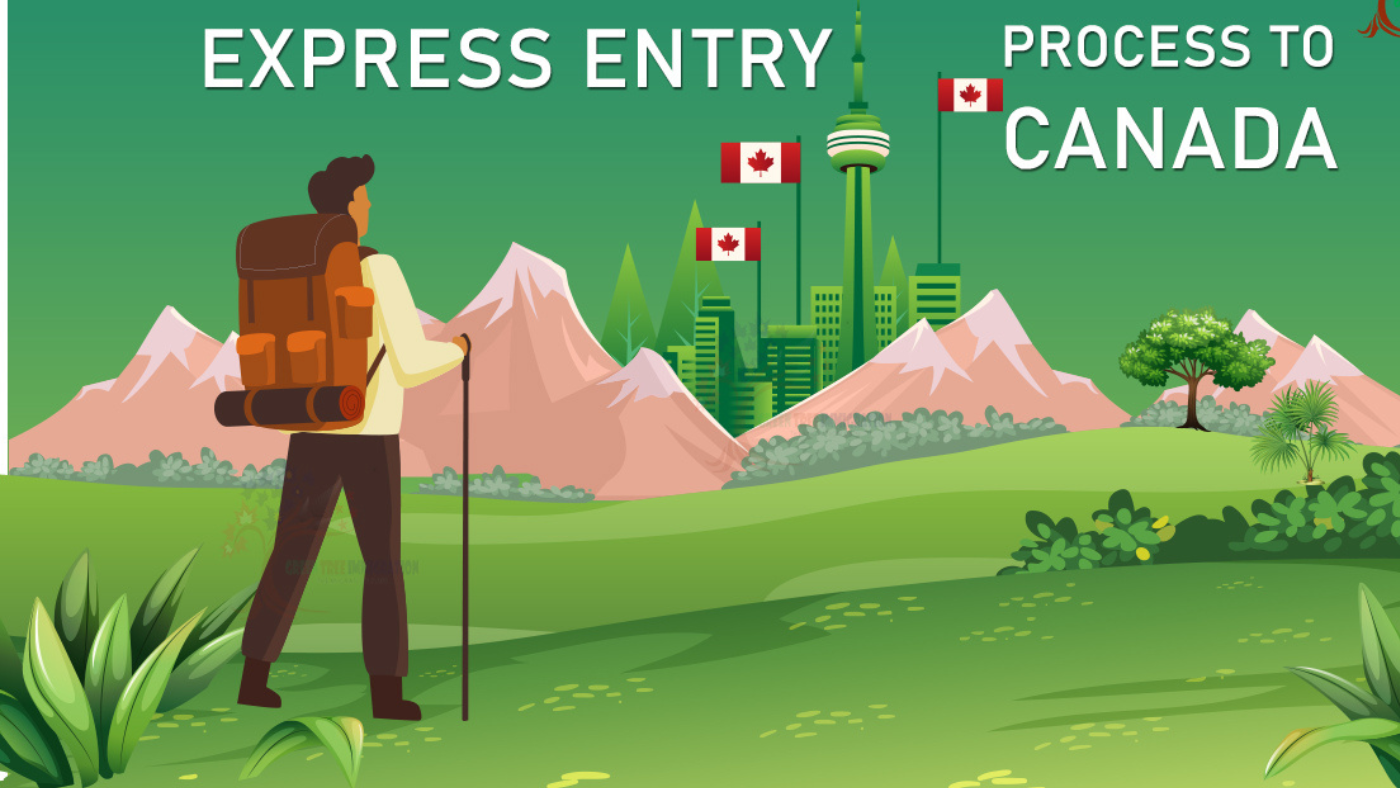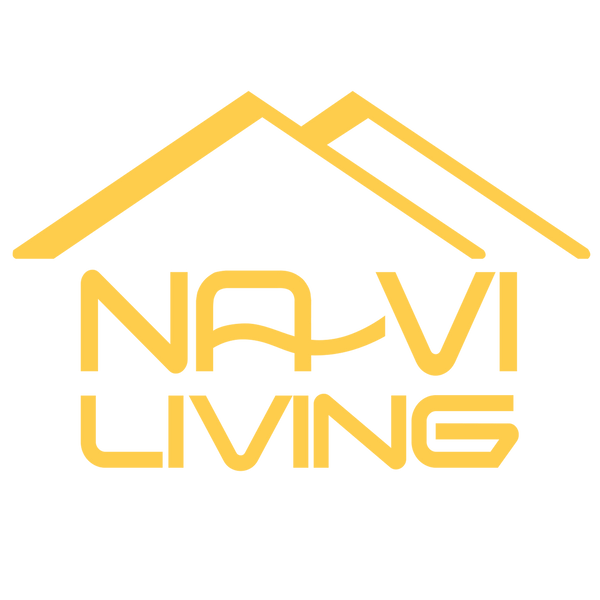Ready to make Canada your new home? This comprehensive guide breaks down everything you need to know about Express Entry in 2025. From understanding eligibility and boosting your CRS score to avoiding common mistakes, we'll help you navigate the process and increase your chances of success. Learn How to Express Entry in Canada and start your journey today!
- How to Obtain Permanent Residency in Canada: A Comprehensive Guide
- What is the Fastest PR in Canada? Top Immigration Pathways in 2024
- Easiest Province to Get PR in Canada: Your Complete 2025 Guide
Understanding About Express Entry

What Is Express Entry?
Express Entry is Canada’s federal immigration system designed to manage applications for permanent residency under three major economic programs: the Federal Skilled Worker Program, the Federal Skilled Trades Program, and the Canadian Experience Class. It uses a points-based Comprehensive Ranking System (CRS) to evaluate candidates based on factors such as age, education, work experience, language proficiency, and adaptability. Candidates submit an online profile and enter a pool where they are ranked against others. The highest-ranking candidates receive Invitations to Apply (ITAs) for permanent residency, typically within six months of applying. Express Entry is known for its streamlined, efficient processing and national scope, allowing successful applicants to live and work anywhere in Canada except Quebec, which has its own immigration system.
Express Entry vs PNP (PNP or Express Entry)
The Provincial Nominee Program (PNP) and Express Entry are two distinct immigration pathways that often intersect but serve different purposes. While Express Entry is a federal system focused on selecting skilled workers nationwide based on a points system, PNPs are provincial or territorial programs designed to meet specific regional labor market needs. Provinces nominate candidates who have skills or job offers aligned with local demands.
PNP applications generally take longer to process often 12 to 19 months because they involve both provincial and federal approvals, compared to Express Entry’s faster six-month processing time. However, a provincial nomination through PNP can add 600 points to a candidate’s CRS score, significantly boosting their chances of receiving an ITA through Express Entry.
Choosing between PNP or Express Entry depends on individual circumstances. If you have a high CRS score and seek a faster, more streamlined process, Express Entry may be preferable. Conversely, if your occupation is in demand in a specific province or you have a job offer or family ties there, applying through a PNP could be advantageous. It’s also common to combine both pathways by applying to a PNP aligned with Express Entry to maximize your chances.
Do I Need a Job Offer for Express Entry?
A job offer is not mandatory to apply for Express Entry, but having one can significantly improve your chances. The Comprehensive Ranking System awards additional points for a valid job offer supported by a Labour Market Impact Assessment (LMIA) or under LMIA-exempt categories, which can boost your CRS score and increase your likelihood of receiving an Invitation to Apply.
Many candidates without a job offer successfully apply through Express Entry based on their education, language skills, and work experience alone. However, certain programs within Express Entry, like the Federal Skilled Trades Program, may require a job offer or a certificate of qualification in a skilled trade.
How Can I Apply for Express Entry

Applying for Express Entry is a multi-step process that requires careful preparation and adherence to eligibility criteria. Express Entry is Canada’s electronic system for managing applications for permanent residency under federal economic immigration programs. Here’s a detailed guide on how to apply for Express Entry in 2025:
Step 1: Assess Your Eligibility
Before starting your application, use the Government of Canada’s online tools to determine if you qualify for one of the Express Entry programs: Federal Skilled Worker Program, Canadian Experience Class, or Federal Skilled Trades Program. Eligibility depends on factors such as age, education, language proficiency, work experience, and other criteria.
Step 2: Gather Required Documents
Prepare all necessary documents, including:
- Valid passport or travel document
- Educational Credential Assessment (ECA) for foreign degrees
- Language test results (IELTS, CELPIP, TEF)
- Proof of work experience (reference letters, job descriptions)
- Proof of funds to support yourself and family members
- Police certificates and medical exam results when requested
Step 3: Create Your Express Entry Profile
Create an online Express Entry profile through the official Immigration, Refugees and Citizenship Canada (IRCC) portal. You will provide detailed information about your skills, education, work experience, language ability, and other personal details. The system will automatically calculate your Comprehensive Ranking System (CRS) score based on this information.
Step 4: Submit Your Profile and Enter the Pool
Once your profile is complete and submitted, you enter the Express Entry candidate pool. Your CRS score determines your ranking against other candidates. Profiles remain valid for up to one year. If you do not receive an Invitation to Apply (ITA) within that time, you can submit a new profile.
Step 5: Improve Your CRS Score (Optional)
If your CRS score is below recent cutoffs, consider ways to improve it, such as retaking language tests to achieve higher scores, gaining additional work experience, obtaining a provincial nomination through a Provincial Nominee Program (PNP), or securing a valid job offer.
Step 6: Receive an Invitation to Apply (ITA)
Candidates with the highest CRS scores are invited to apply for permanent residency during periodic Express Entry draws. Once you receive an ITA, you have 60 days to submit a complete application for permanent residence.
Step 7: Submit Your Permanent Residency Application
After receiving an ITA, submit your permanent residency application online, including all supporting documents such as medical exams, police certificates, and proof of funds. Pay the required fees and complete biometrics when requested.
Step 8: Wait for Processing and Decision
IRCC aims to process most Express Entry applications within six months. You can track your application status through your online account. Once approved, you will receive a Confirmation of Permanent Residence (COPR) and instructions for landing in Canada.
Requirements for Express Entry Canada

Who is Eligible for Express Entry?
Eligibility for Express Entry depends on meeting the minimum criteria for one of the three programs managed under the system: the Federal Skilled Worker Program (FSWP), the Canadian Experience Class (CEC), or the Federal Skilled Trades Program (FSTP).
- Federal Skilled Worker Program (FSWP): Requires at least one year of continuous full-time or equivalent paid work experience in the past 10 years in a skilled occupation (TEER category 0, 1, 2, or 3 of the National Occupational Classification), validated intermediate or better language ability in English or French, and, for those educated outside Canada, an Educational Credential Assessment (ECA) report. Candidates must also score at least 67 points under the FSWP's points grid.
- Canadian Experience Class (CEC): Designed for individuals with Canadian work experience, requiring at least one year of skilled, professional, or technical work experience in Canada within three years of the application date, as well as meeting language proficiency criteria.
- Federal Skilled Trades Program (FSTP): For candidates who want to become permanent residents based on their qualification in a skilled trade, requiring a minimum of two years of full-time work experience in a skilled trade within the five-year period before applying, meeting the job requirements for that skilled trade, having a full-time job offer in Canada for at least one year or a certificate of qualification in the skilled trade issued by a Canadian authority, and meeting the necessary language proficiency criteria.
What Are the Requirements for Express Entry?
To meet the express entry canada requirements, candidates must first meet the minimum eligibility criteria for one of the Express Entry programs. Additionally, there are several other requirements to consider:
- Express Entry Profile: Applicants must create an Express Entry profile, providing information about their skills, experience, and other relevant details.
- Language Proficiency: Applicants must demonstrate proficiency in English or French by taking a language test approved by IRCC. The minimum language proficiency varies depending on the Express Entry program.
- Education: Depending on the program, applicants may need to have completed secondary education or have a foreign educational credential assessed by a designated organization.
- Work Experience: Applicants must have qualifying work experience, which varies based on the Express Entry program. The work experience must be in a skilled occupation (TEER category 0, 1, 2, or 3).
- Admissibility: Applicants must be admissible to Canada, meaning they do not have a criminal record or pose a security risk.
- Funds: Applicants may need to demonstrate that they have sufficient funds to support themselves and their family members upon arrival in Canada, unless they have a valid job offer.
For 2025, category-based draws will continue, targeting candidates with specific skills and work experience. Priority will be given to those with French-language proficiency, and experience in healthcare and social services, STEM, trades, agriculture and agri-food, and education occupations.
How to Obtain a Medical Certificate for Express Entry
To meet the medical requirements for Express Entry, applicants must undergo a medical examination performed by a panel physician authorized by IRCC. Here’s how to obtain a medical certificate:
- Find a Panel Physician: Locate a panel physician in your country of residence authorized by IRCC. A list of panel physicians is available on the IRCC website.
- Schedule a Medical Exam: Contact the panel physician to schedule a medical examination. Inform the physician that you require a medical exam for Canadian immigration purposes.
- Attend the Medical Exam: Bring your passport or other identification documents, any medical reports or test results you have, and any eyeglasses or contact lenses you wear. The medical examination will typically include a physical exam, chest X-ray, and blood and urine tests.
- Receive the Medical Certificate: The panel physician will send the results of your medical examination directly to IRCC. You will not receive the medical certificate yourself. IRCC will review the results to determine if you meet the medical requirements for Express Entry.
Express Entry Canada Requirements Checklist
To ensure you meet all the express entry canada requirements, use this checklist:
- Meet the eligibility criteria for one of the Express Entry programs (FSWP, CEC, or FSTP).
- Create an Express Entry profile and enter the Express Entry pool.
- Obtain an Educational Credential Assessment (ECA) for foreign education.
- Take an approved language test and meet the minimum language proficiency requirements.
- Gather proof of work experience.
- Obtain police certificates from your country of origin and any country where you have lived for six months or more.
- Have sufficient funds to support yourself and your family, if required.
- Be admissible to Canada.
- Undergo a medical examination by a panel physician.
- If applicable, meet the requirements for category-based selection (e.g., French-language proficiency, specific work experience).
For 2025, prioritize meeting the needs for category-based draws and target sectors such as healthcare, trades, and education. These refinements ensure that Express Entry remains responsive to Canada’s workforce requirements while supporting economic growth and demographic balance.
Express Entry Costs and Timelines

How Much Does Express Entry Cost in 2025?
The costs associated with Express Entry can be broken down into several categories:
- Application Fees:
- Principal applicant: $850 CAD
- Spouse or common-law partner: $850 CAD
- Dependent child: $230 CAD per child
- Right of Permanent Residence Fee (RPRF): $515 CAD per person, paid before landing in Canada
- Language Testing:
- IELTS or CELPIP: Approximately $300 CAD per test
- Educational Credential Assessment (ECA):
- Varies depending on the organization, typically ranging from $200 to $300 CAD
- Medical Examination: Varies depending on the doctor and location, typically between $200 and $400 CAD per person
- Police Certificates: Varies depending on the country; costs range from $20 to $100 CAD per certificate
- Biometrics: $85 CAD per person
Overall, a single applicant can expect to pay around $2,000 to $2,500 CAD, while a family of four could pay between $4,000 and $5,000 CAD, including all fees for applications, assessments, and exams. These costs do not include potential legal or consulting fees if you choose to hire an immigration lawyer or consultant.
How Long Does Express Entry Take?
IRCC aims to process Express Entry applications within six months. However, processing times can vary depending on several factors, including the volume of applications, the complexity of your case, and whether additional information is required.
As of June 2025, the following processing times are observed for the programs managed under Express Entry:
- Canadian Experience Class (CEC): Approximately 5 months
- Federal Skilled Worker Program (FSWP): Approximately 5 months
It is essential to note that these are estimates, and actual processing times may vary. Factors such as incomplete applications or the need for additional verification can extend the wait time. IRCC updates processing times regularly, so it's best to check their website for the most current information. IRCC provides precise estimates, with weekly updates for temporary visas and PR cards and monthly updates for citizenship, PR, and family sponsorships.
While LMIA applications and work permits are not directly related to Express Entry costs and timelines, obtaining a job offer supported by an LMIA can significantly boost your CRS score and improve your chances of receiving an Invitation to Apply.
Creating and Managing Your Express Entry Profile

What is an Express Entry profile?
An Express Entry profile is an online form that skilled workers complete to express their interest in immigrating to Canada. This profile serves as an asset that allows the Canadian government to evaluate whether an applicant is eligible to immigrate as a skilled worker. It is the first step towards potential immigration through the Express Entry system. The profile gathers information about your skills, work experience, education, language ability, and other details that determine your eligibility and ranking in the Express Entry pool.
How to create an Express Entry profile
Creating an Express Entry profile involves several steps:
- Assess Eligibility: Ensure you meet the minimum requirements for one of the Express Entry programs (Federal Skilled Worker Program, Canadian Experience Class, or Federal Skilled Trades Program).
- Gather Documents: Prepare necessary documents such as your passport, language test results, and educational credentials.
- Access the IRCC Portal: Sign in to your IRCC secure account to begin creating your profile.
- Provide Information: Fill out the online forms with accurate information about your education, work history, language skills, and other relevant details.
- Submit Your Profile: Once completed, submit your profile to enter the Express Entry pool.
Completing an Express Entry profile doesn't guarantee an invitation to apply for permanent residence; it only places you in the pool of eligible candidates. You have 60 days to complete and submit your profile, otherwise, you’ll have to start again.
CRS score calculator
The Comprehensive Ranking System (CRS) is a points-based system used to assess and rank Express Entry profiles. The CRS score is based on factors such as age, education, work experience, language proficiency, and other criteria. To estimate your CRS score, you can use the CRS tool available on the Canadian government's website or other online resources. Understanding how the CRS score is calculated can help you identify areas where you can improve your profile to increase your chances of receiving an Invitation to Apply (ITA).
Why is my Express Entry score zero?
A zero CRS score typically indicates that your profile is incomplete or that you do not meet the minimum eligibility criteria for any of the Express Entry programs. Possible reasons for a zero score include:
- Incomplete Information: Ensure all sections of your profile are fully and accurately completed.
- Low Language Scores: Verify that your language test scores meet the minimum requirements.
- Inadequate Work Experience: Confirm that your work experience meets the criteria for skilled occupations.
- Incorrect NOC Code: Ensure that you have selected the correct National Occupational Classification (NOC) code for your occupation.
Review your profile carefully to identify any missing or incorrect information, and take steps to improve your qualifications if necessary.
How can I check the status of my Express Entry profile?
You can check the status of your Express Entry profile by logging into your IRCC secure account. The status will indicate whether your profile is active in the pool, if you have received an Invitation to Apply (ITA), or if your application is being processed. Regularly monitoring your profile status allows you to stay informed about any updates or requests from IRCC.
How long is an Express Entry profile valid?
An Express Entry profile is valid for one year from the date of submission. If you do not receive an Invitation to Apply (ITA) within this period, your profile will expire. You can create a new profile to re-enter the pool if your profile expires and you still meet the eligibility criteria.
Based on our previous conversations, I know you are interested in Express Entry for Canadian immigration. This section provides important information on how to create and manage your Express Entry profile, calculate your CRS score, and understand the validity of your profile. I also remember you are interested in LMIA applications and work permits. It's worth noting that obtaining a job offer supported by an LMIA can significantly boost your CRS score and improve your chances of receiving an Invitation to Apply.
Best Way to Move to Canada in 2025

Express Entry vs Other Immigration Streams
Express Entry remains one of the fastest and most popular pathways for skilled workers to immigrate to Canada in 2025. It manages applications for permanent residency through programs like the Federal Skilled Worker Program, Canadian Experience Class, and Federal Skilled Trades Program. Express Entry uses a points-based Comprehensive Ranking System (CRS) that evaluates candidates based on age, education, work experience, language proficiency, and other factors. Candidates with high CRS scores receive Invitations to Apply (ITA) for permanent residence, often within six to eight months.
However, Express Entry is just one of many immigration streams. Other pathways include Provincial Nominee Programs (PNPs), family sponsorship, and study-to-work routes. Each stream targets different applicant profiles and needs. For example, PNPs allow provinces to nominate candidates based on regional labor market demands, often requiring a job offer or work experience in that province. Family sponsorship enables Canadian citizens or permanent residents to sponsor relatives, while the study pathway offers international students a route to permanent residence after completing Canadian education and gaining work experience.
When to Consider PNP, Family Sponsorship, or Study Pathway
- Provincial Nominee Programs (PNPs): Consider PNPs if you have a specific province in mind, especially if you have a job offer or work experience in that province. PNPs can also benefit candidates with lower CRS scores by awarding additional points through provincial nomination. PNPs are ideal for those targeting in-demand occupations listed by provinces, such as healthcare, trades, and technology sectors.
- Family Sponsorship: This pathway is suitable if you have close family members who are Canadian citizens or permanent residents willing to sponsor you. It provides a more direct route to permanent residence but is limited to eligible relatives.
- Study Pathway: International students can leverage Canadian education as a stepping stone to permanent residency. After completing an eligible program, graduates can obtain a Post-Graduation Work Permit (PGWP) and gain Canadian work experience, which significantly improves eligibility under Express Entry or PNP streams.
Combining Express Entry with Other Immigration Strategies
Combining Express Entry with other immigration strategies can optimize your chances of success. For example, applying to a PNP aligned with Express Entry can grant you a provincial nomination, adding 600 points to your CRS score and virtually guaranteeing an Invitation to Apply. Similarly, international graduates can use their Canadian education and work experience to strengthen their Express Entry profile.
In 2025, Canada’s immigration focus is on supporting economic growth by prioritizing candidates already in Canada, especially in healthcare, skilled trades, and education sectors. Utilizing multiple pathways strategically—such as starting with a study permit, transitioning to a work permit, and then applying through Express Entry or PNP—can provide a smoother and faster route to permanent residency.
FAQs and Common Mistakes
Top Mistakes That Lower CRS Score
Many applicants unknowingly make errors that reduce their Comprehensive Ranking System (CRS) score and delay their Express Entry process. Common mistakes include:
- Not claiming all eligible points: Missing out on points for factors like siblings in Canada, second language ability, or Canadian education credentials.
- Using estimated language test scores: Entering unofficial or guessed scores instead of valid test results can invalidate your profile.
- Missing Educational Credential Assessment (ECA): Failing to submit an ECA for foreign degrees means losing valuable points.
- Not updating your profile after key changes: Changes like improved language scores, additional education, or marital status must be updated to reflect your true CRS score.
- Waiting too long to enter the pool: Delaying your profile submission can cause missed opportunities for draws and ITAs.
Avoiding these mistakes by carefully preparing and updating your profile can significantly improve your chances of success.
What Happens After ITA?
After receiving an Invitation to Apply (ITA), you have 60 days to submit a complete application for permanent residence. This includes providing all required documents such as medical exams, police certificates, proof of funds, and language test results. It’s crucial to prepare these documents in advance to avoid delays. Once submitted, IRCC aims to process applications within six months. During this time, you may be asked for additional information or documents. After approval, you will receive Confirmation of Permanent Residence (COPR) and instructions for landing in Canada.
How to Improve CRS Score in 2025
To boost your CRS score in 2025, consider these strategies:
- Improve language test scores: Higher scores in English or French can add significant points.
- Obtain a Provincial Nomination: PNP nominations add 600 points to your CRS score.
- Gain Canadian work experience: Canadian experience is highly valued and increases your ranking.
- Secure a valid job offer supported by LMIA or LMIA exemption: This can add points and improve your profile.
- Claim all eligible points: Include factors such as spouse’s qualifications, additional education, and second language proficiency.
- Complete additional education or training: Higher education levels earn more points.
Regularly reviewing your profile and updating it with new qualifications or achievements can help you stay competitive.
What to Do If Not Selected
If you are not selected in an Express Entry draw, don’t be discouraged. You can:
- Update and improve your profile: Work on increasing your CRS score by enhancing language skills, gaining more work experience, or obtaining a provincial nomination.
- Re-enter the pool: Profiles are valid for one year; you can submit a new profile after expiration or update your existing one.
- Consider other immigration pathways: Explore Provincial Nominee Programs, family sponsorship, or study permits as alternative routes.
- Seek professional advice: Consulting an immigration expert can help identify the best strategies tailored to your situation.
Persistence and strategic improvements increase your chances of receiving an Invitation to Apply in future draws.
Conclusion
In summary, Express Entry is a fast and efficient way to immigrate to Canada for skilled workers. By understanding the eligibility criteria, properly managing your profile, and improving your CRS score, you can increase your chances of receiving an Invitation to Apply. Staying informed and avoiding common mistakes will help you successfully navigate the process and achieve your goal of becoming a permanent resident in Canada.




